Acute Whiplash Injury Management
Article by Anna Kania
What is whiplash? Whiplash is an injury to your neck. It is caused by your neck bending forcibly forward and then backward, or vice versa.

Whiplash (WAD) Statistics and Prognosis
Most whiplash injuries result from a collision that includes sudden acceleration or deceleration. A whiplash injury may result from:
- Auto accidents. Rear-end collisions are a major cause of whiplash (affecting up to 83% of people involved in collisions).
- Physical abuse or assault. Whiplash can occur if you are punched or shaken. It's one of the injuries seen in shaken baby syndrome.
- Contact sports. Football tackles and other sports-related collisions can sometimes cause whiplash.
It is difficult to predict how each person with whiplash may recover. In general, you may be more likely to have chronic pain if your first symptoms were intense, started rapidly and included:
- Severe neck pain
- More-limited range of motion
- Pain that spread to the arms
You are likely to have a worse outcome if you:
- Have had whiplash before
- Are older in age
- Had existing low back or neck pain
- Were involved in a high-speed injury
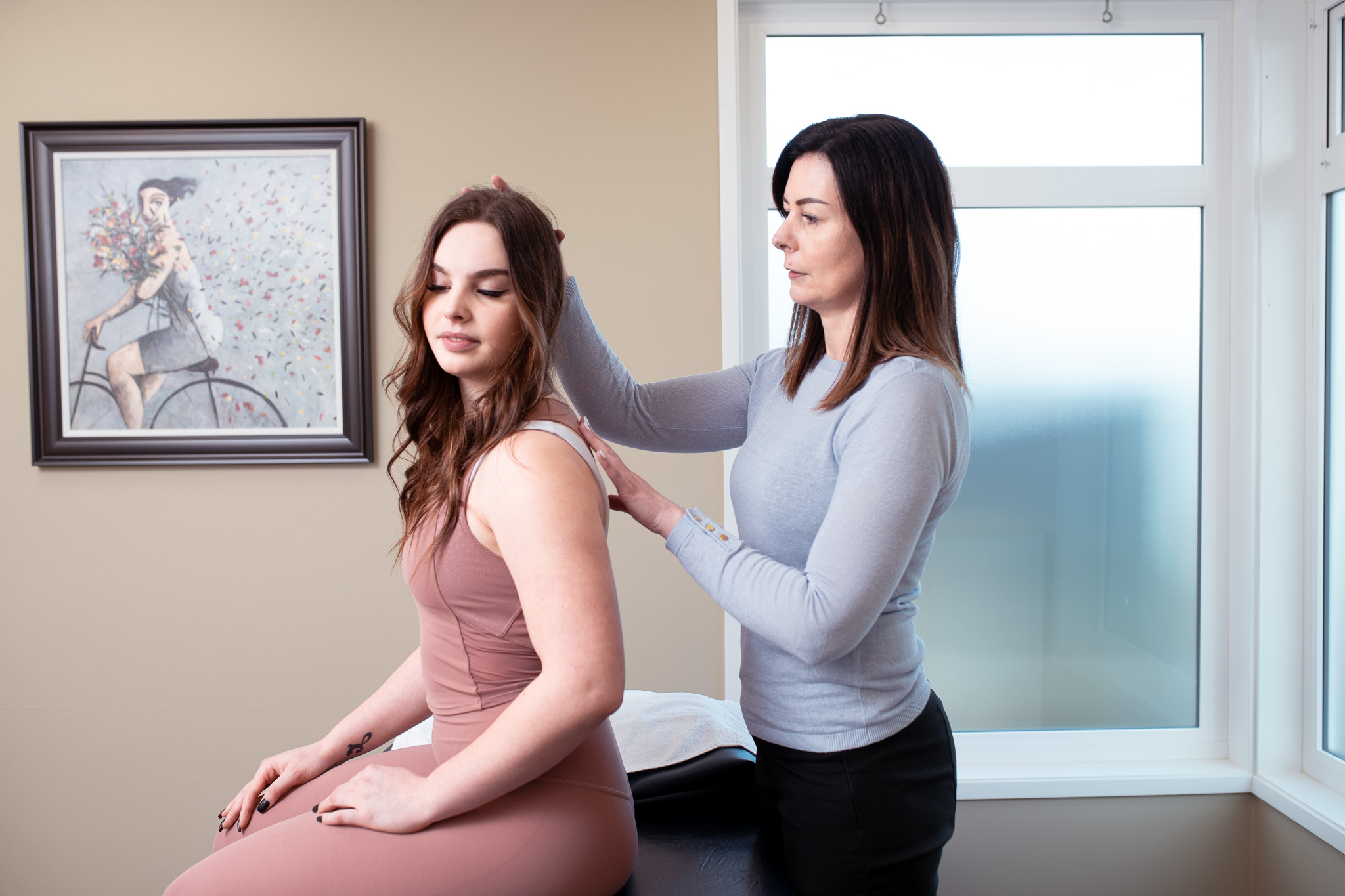
How do I know if I have whiplash?
Signs and symptoms of whiplash usually develop within days of the injury, and may include:
- Neck pain and stiffness
- Worsening of pain with neck movement Loss of range of motion in the neck
- Headaches, most often starting at the base of the skull
- Tenderness or pain in the shoulder, upper back or arms
- Tingling or numbness in the arms
- Fatigue
- Dizziness
However, not all whiplash is the same. Experts created a grading system for the severity of whiplash-associated disorders. Known as the Quebec Classification of Whiplash-Associated Disorders:
Grade 0
At this level, a person with whiplash does not feel any pain or show any signs or symptoms of injury.
Grade 1
This level of whiplash is the first one where a person feels pain. They will also be stiff and tender to touch.
Grade 2
This is similar to Grade 1 but also includes physical signs of an injury such as radiating pain, muscle spasm, and physical signs of injury, including bruising, swelling and sensitivity to being touched around the injury.
Grade 3
Involves neurological symptoms such as muscle weakness, numbness (including loss of ability to feel hot, cold or pain), burning, tingling or “pins and needles”, headaches, vision problems, hoarseness or loss of voice, trouble swallowing, and dizziness or vertigo.
Grade 4
Same as Grade 3 but more severe. This may be indicative of a neck fracture or a vertebral segment being out of place, putting pressure on your spinal cord or nearby nerves.

Call your doctor if:
- Neck pain and stiffness come back after they had cleared up
- Neck pain is severe
- The pain spreads to your shoulders or arms
- You have numbness, tingling, or weakness in your arms or legs
- You have problems with your bladder or bowels
How do I treat whiplash?
- Once serious complications are ruled out, stay active- continue your normal activities as much as you can. Avoiding activity after a whiplash injury might mean it takes you longer to recover. Keep moving your neck up and down, side to side, and from ear to ear
- At first, you may need to adapt how you move to take care of your neck. Then gradually build up to your normal activities as your neck improves.
- Apply heat or ice to the painful area. One good method is to use ice for the first 48 - 72 hours, then use heat after that. Heat may be applied with hot showers, hot compresses, or a heating pad. Be careful not to fall asleep with a heating pad or ice bag on. This can give you burns or frostbite.
- If needed, you may take over-the-counter pain relievers such as ibuprofen (Advil, Motrin IB) or acetaminophen (Tylenol).
Other steps that may help your neck pain improve are:
- Use relaxation techniques and regular exercise to prevent stress and tension in the neck muscles.
- Use good posture, especially if you sit at a desk all day. Keep your back supported. Adjust your computer monitor to eye level. This prevents you from having to look up or down.
- If you work at a computer, stretch your neck every hour or so.
- Use a headset when on the telephone, especially if answering or using the phone is a main part of your job.
- When reading or typing from documents at your desk, place them in a holder at eye level.
What exercises are recommended following acute whiplash injury?
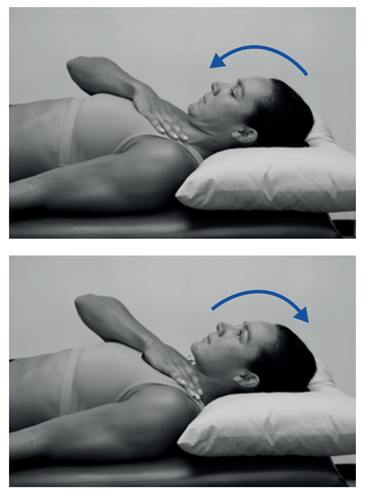
- The chin nod exercise: Gently and slowly nod your head forward as if to say ‘yes’. Feel the muscles at the front of your neck. Stop the nodding action just before you feel the front muscles hardening. Hold the nod position for five seconds and then relax. Gently move your head back to the normal start position. Repeat up to 10 times.
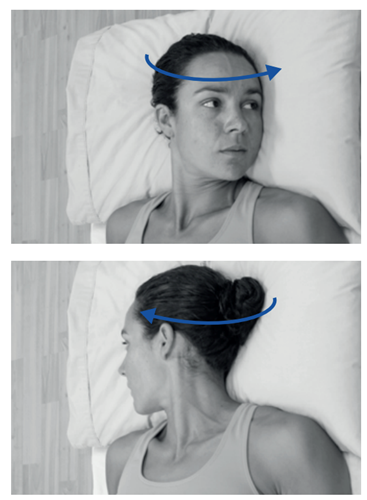
2. Head rotation: Gently turn your head from one side to the other. Look where you are going. Progressively aim to turn your head far enough so your chin is in line with your shoulder and you can see the wall in line with your shoulder. Repeat 10 times to each side.

3. Shoulder blade exercise: This exercise will relax and ease any tension in the muscles on top of your shoulders and it will give you pain relief. a. Lie on your right side with your arm resting up on two pillows. b. Roll your left shoulder blade back and across your ribs towards the centre of your back. Hold the position for 10 seconds. Repeat five times. Repeat lying on the left side for the right shoulder blade.
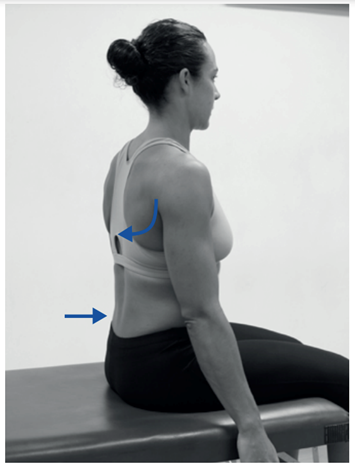
4. Correct postural position: Correct your posture regularly by gently straightening up your lower back and pelvis (sit tall). Now gently draw your shoulder blades back and down. Gently tuck your chin in. Hold the position with ease for at least 10 seconds. This position will prevent and ease muscle pain and tension in your neck and shoulder muscles. Repeat the correction regularly, every half hour during the day. You can do this exercise at work, in the car, on a train or bus and sitting at home.
Neck movement exercises Sit in the correct postural position as described in exercise 4.

5. Rotation: Gently turn your head from one side to the other. Look where you are going, progressively aim to see the wall in line with your shoulder. This exercise is similar to the exercise you did lying down, only this time you do it sitting. Repeat 10 times.
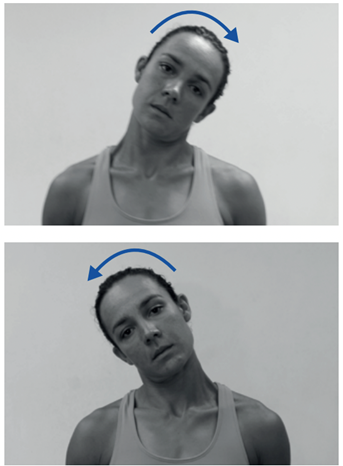
6. Side bending: Gently tilt your head towards your shoulder and feel the gentle stretch in the muscles on the side of your neck. Perform the movement to both sides. Repeat 10 times.
When you are performing the exercises, stop and contact your doctor or therapist if you notice:
- dizziness, light headedness, blurred vision, fainting or disorientation
- sudden pain shooting down your arm, or numbness or weakness in your arm or hand
- unusually severe neck pain, and/or
- that exercises consistently produce a headache, which persists
References:
- https://www.sira.nsw.gov.au/resources-library/motor-accident-resources/publications/for-professionals/whiplash-resources/SIRA08104-Whiplash-Guidelines-1117-396479.pdf
- https://www.mayoclinic.org/diseases-conditions/whiplash/symptoms-causes/syc-20378921
- https://www.ncbi.nlm.nih.gov/pmc/articles/PMC2684148/
- https://pubmed.ncbi.nlm.nih.gov/16246992/
You May Also Like...
-
 ArticleView Post
ArticleView PostHow a Holistic Approach to Fitness Can Help Prevent Injury
Fitness is about much more than our last run, or our personal best. Understanding our imbalances is key to success.
-
 ArticleView Post
ArticleView PostExercise Therapy for Knee Pain
Feeling pain radiating from under your kneecap? What is it, what causes it, and what can you do about it?
-
 ArticleView Post
ArticleView PostBalance & Fall Prevention for the Elderly
The elderly are at the highest risk for falls which may cause serious trauma. So how can we help seniors prevent fall-related injuries?